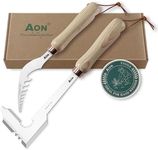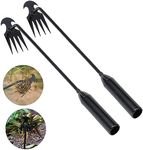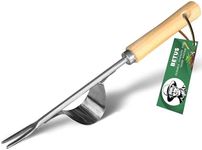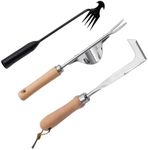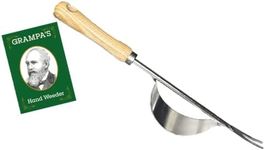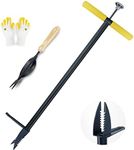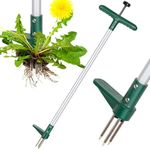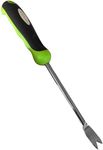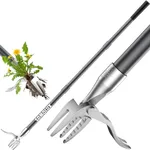Buying Guide for the Best Weed Pulling Tools
Choosing the right weed-pulling tool can make gardening much easier and more enjoyable. The best tool for you depends on the type of weeds you’re dealing with, the size of your garden, and your physical comfort. Understanding the key features of these tools will help you select one that fits your needs and makes weed removal more efficient and less tiring.Handle LengthHandle length refers to how long the tool’s handle is, and it’s important because it affects your posture and comfort while working. Short handles (usually under 18 inches) are great for close-up, precise work and are best if you like to kneel or sit while gardening. Medium handles (18-36 inches) offer a balance between control and reach, suitable for both standing and kneeling. Long handles (over 36 inches) allow you to stand upright, which is easier on your back and knees, especially for larger areas. Choose a handle length that matches how you prefer to work and the size of your garden.
Tool Head DesignThe tool head is the part that actually grabs or cuts the weed, and its design determines how effective the tool is for different types of weeds and soil. Forked heads are good for dandelions and deep-rooted weeds, claw or tine heads work well for loosening soil and pulling out clusters, and blade or knife heads are best for slicing through roots. Consider the types of weeds you most often encounter and pick a head design that targets those weeds effectively.
Material and DurabilityMaterial refers to what the tool is made from, such as steel, aluminum, or plastic, and it affects how long the tool will last and how heavy it is. Steel is strong and durable, making it good for tough soil and frequent use, but it can be heavier. Aluminum is lighter and resists rust, but may not be as strong for heavy-duty work. Plastic is lightweight and affordable, but usually less durable. Think about how often you’ll use the tool and how tough your soil is to decide which material is best for you.
Grip ComfortGrip comfort is about how the handle feels in your hand, which is important for preventing blisters and fatigue during longer gardening sessions. Some tools have cushioned or ergonomic grips that are easier on your hands, especially if you have arthritis or plan to use the tool for extended periods. If comfort is a priority, look for tools with soft, non-slip grips that fit well in your hand.
Weed Removal MechanismThis refers to how the tool actually removes the weed from the ground. Some tools use a twisting or levering action to pull weeds out by the root, while others slice or cut the weed at the base. Tools that pull out the entire root are better for preventing regrowth, but may require more effort. If you want quick results and don’t mind some regrowth, a slicing tool might be enough. Consider how thorough you want to be and how much effort you’re willing to put in.
Ease of CleaningEase of cleaning is about how simple it is to remove dirt and plant material from the tool after use. Tools with fewer crevices and smooth surfaces are easier to clean, which helps prevent rust and keeps the tool in good condition. If you want to spend less time on maintenance, look for tools that are easy to rinse off and dry.
